The old adage goes that good things come in small packages. The Jonsbo D31 and D41 cases go a long way to proving just how right that saying is!
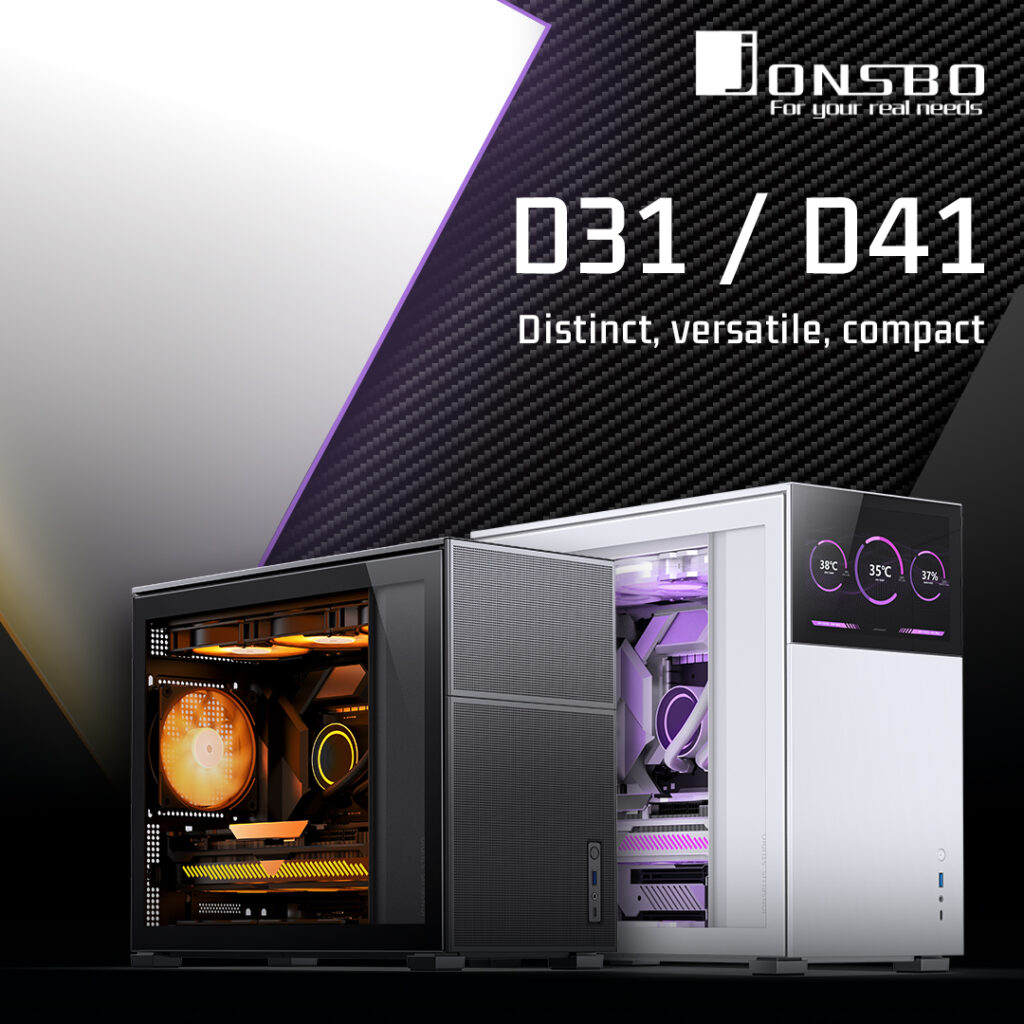
These series pack phenomenal versatility and functionality into cases with impressively small footprints. Boasting support for NVIDIA RTX 40 Series GPUs, known for being chonky bois, we are excited to take the lid off these cases just to see how the inner machinations come together. I’ve not even mentioned the best part yet: a removable 8” LCD screen that can be used to display stats and artwork, or even be used as a second monitor! Intrigued yet?
What is Available?
In total, there are sixteen new cases available to pre-order. These are split into the two lines, the D31 and the D41. For each line, there is a standard model, a mesh model, a standard with screen model, and a mesh with screen model. Oh, and each of those is available in black or white. We needed all our fingers and toes to count this lot out!
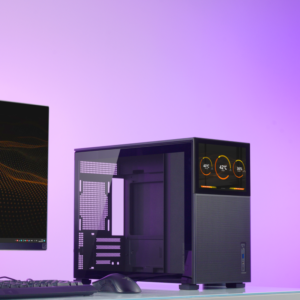
- Jonsbo D31 Standard
- Jonsbo D31 Mesh
- Jonsbo D31 Standard Screen
- Jonsbo D31 Mesh Screen
- Jonsbo D41 Standard
- Jonsbo D41 Mesh
- Jonsbo D41 Standard Screen
- Jonsbo D41 Mesh Screen
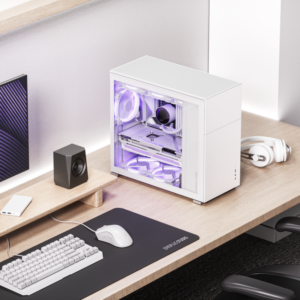
Now, it’s time to take a closer look at the shared features of each these cases.
The Jonsbo D31
The Jonsbo D31 is a Micro-ATX PC case, with a small footprint, yet spacious volume of 31.3L. The top panel features dense mesh ventilation, covering 92% of the area. Heat is effectively exhausted from the top of this case thanks to this design. What’s more, there is further mesh ventilation across the internal chassis structure and along the edges of the front panel, to enhance natural airflow and intake.
Of course, on top of this, there is extensive support for air and water-cooling hardware integrated throughout the structure. Both the top and bottom panels can hold up to three 120mm fans or an AIO radiator at a maximum length of 360mm*. In addition to this, the front and rear panels have support for a singular 120mm fan. The finishing piece, the D31 can accommodate CPU coolers up to 168mm tall. The perfect foundation for a versatile and efficient thermal solution.
Last thing to know, before we move onto the slightly more complicated features, is that this case can hold up to Micro-ATX motherboards and has three PCIe expansion slots.
*To enable the standard cooling configuration on the bottom panel, it is advised you instal your graphics card on the second PCIe expansion slot.
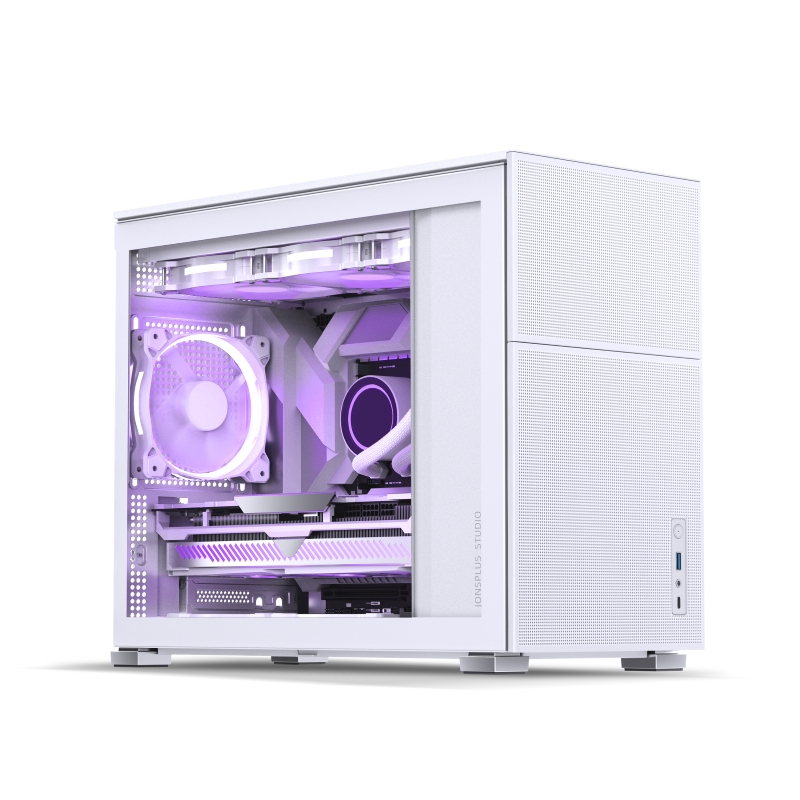
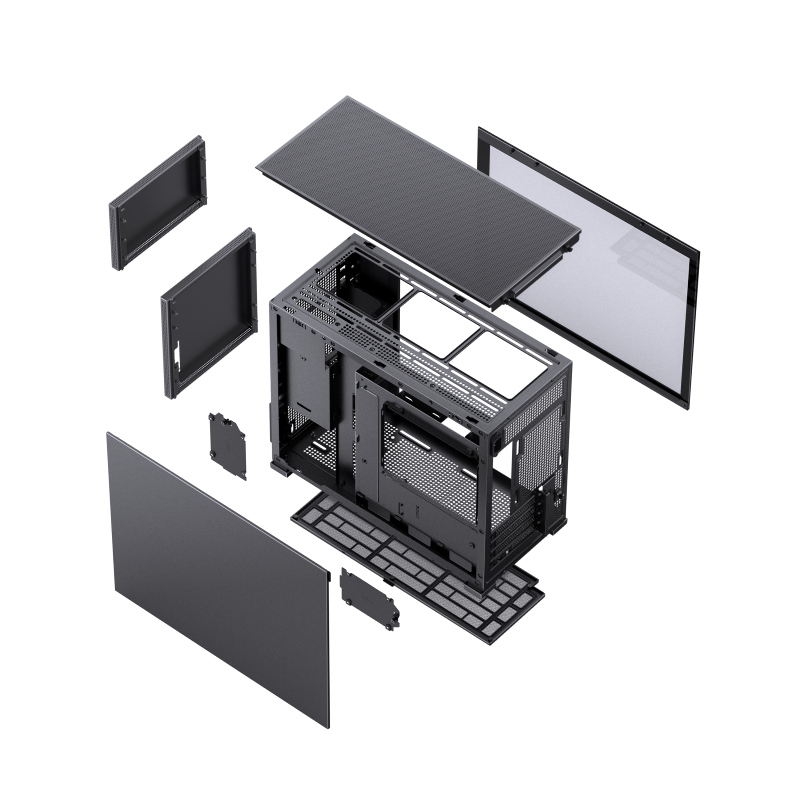
Graphics and Power
You might have noticed that I have mentioned nothing about GPU support, despite stating that this case can hold an NVIDIA RTX 40 Series graphics card. That is because the GPU you instal relies entirely upon the size and positioning of your power supply. The Jonsbo D31 has a carefully curated interior, which enables the support for larger hardware whilst still maintaining its small stature. Equally, it’s this intelligent design which facilitates great versatility when it comes to the positioning of your components.
First of all, the power supply can be mounted facing into the front panel or into the main chamber of the chassis. Which you opt for entirely depends on where you want the air intake facing. Those cheeky mesh strips on the front panel will allow for air movement if you mount the fan against the panel. Everything has been thought of and covered.
Right, now for the really exciting bit. The power supply can be mounted in one of four places upon the front panel. Each offers unique configurations for your PSU and GPU.
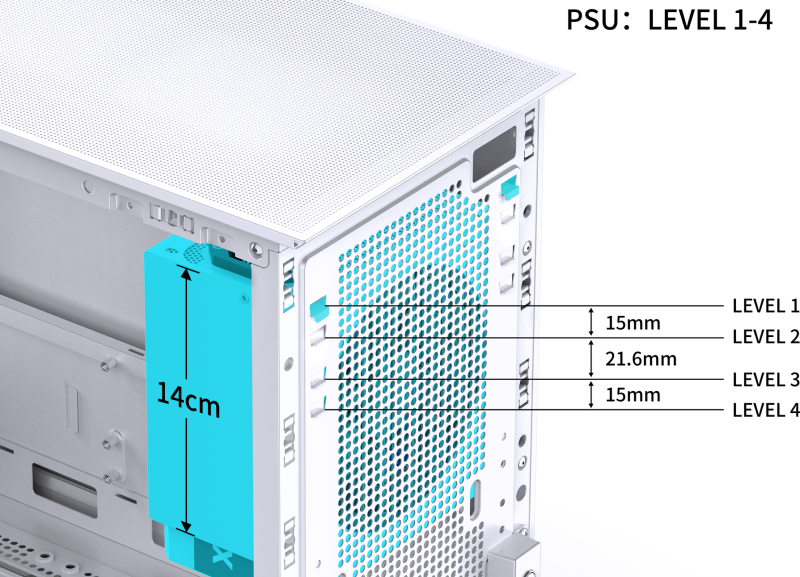
So, what can you install at each level? Here is the full breakdown of what’s possible.
Jonsbo D31 PSU Positioning
- Level One: This is the highest position available. Here, you can mount a 140mm long PSU and there is clearance for up to 400mm long graphics card. If you need a larger power supply, between 150mm and 160mm, then clearance drops to between 342mm and 360mm. What’s more, as the PSU is close to the top panel, you are restricted to a maximum of two 140mm fans or a 280mm AIO radiator.
- Level Two: This second position is 15mm lower than the topmost. This allows you to mount three fans upon the top panel, but the radiator is still at max 280mm. For the PSU, placing a unit measuring between 140mm and 160mm in this position facilitates a graphics card between 342mm and 360mm.
- Level Three: Firmly in the middle, this position is 21.6mm lower than level two. With a 140mm PSU, you can instal a GPU between 342mm and 360mm. This is the position and PSU size Jonsbo recommends for NVIDIA RTX 40 Series cards. Should you need a larger power supply, between 150mm and 160mm, then clearance drops to 330mm for the graphics card. However, you can fit the full three 120mm fans or 360mm AIO radiator on the top panel with this PSU placed here.
- Level Four: This is the lowest placement, another 15mm underneath level three. Here, you can mount a PSU between 140mm and 160mm, with clearance for a 330mm GPU. Plus, there is plenty of space for your cooling hardware on the top panel.
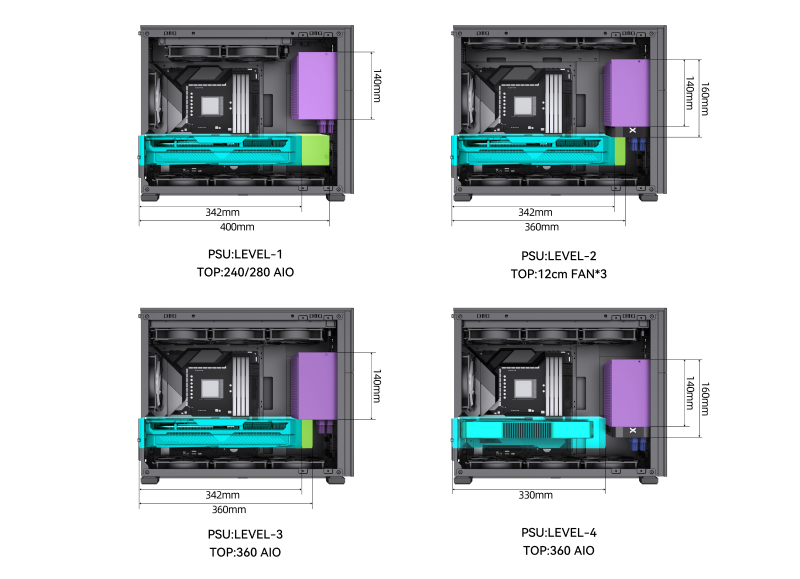
The Jonsbo D41
I bet you’re wondering, what is the main difference between the Jonsbo D31 and D41? They both share the same sleek aesthetic, steel construction, and variations. So, what’s different? Size. The Jonsbo D41 is technically an ATX PC case with a 35.4L volume, but it is much more compact to retain the smaller footprint established with the D31.
All of the cooling specifications stay the same from the D31 to the D41, and power/graphics configurations change slightly – but I’ll get onto that shortly.
The other significant change is that the D41 can hold more storage. Both the Jonsbo D31 and D41 have two 2.5” SSD trays on the back of the motherboard plate, but the D41 has two storage modes whereas the D31 only has the one. A drive cage is included with the D41 which can hold two 3.5” HDDs and an additional 2.5” SSD. This mounts on the bottom of the chassis below the power supply. Where you mount the PSU does affect the ability to instal this drive cage, however. Therefore, you can alternatively instal just the one 3.5” HDD on the bottom of the chassis, without the drive cage. This is the storage mode available on the D31.
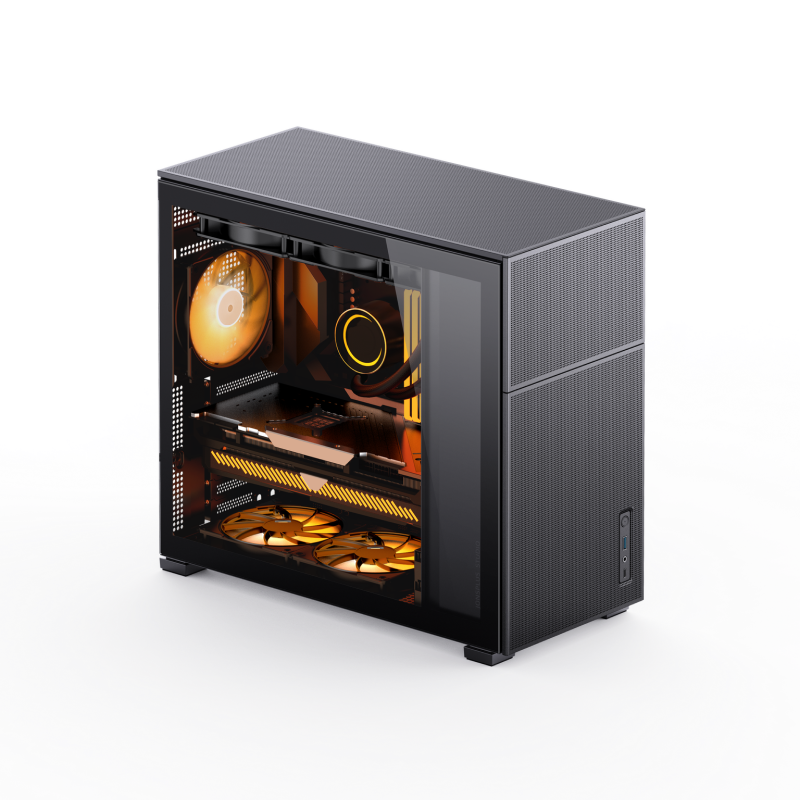
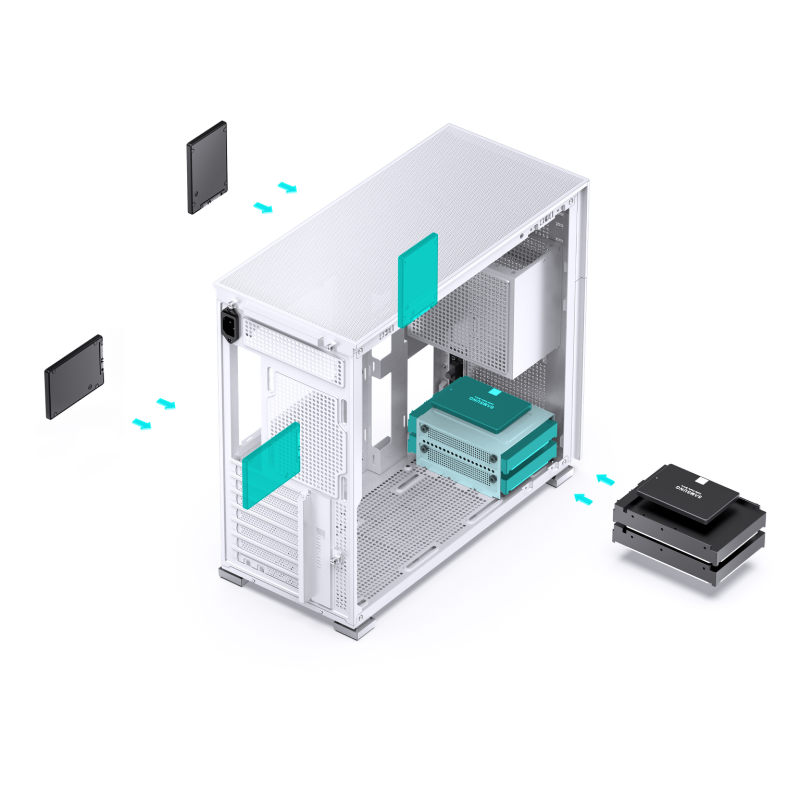
Graphics and Power
Once again, there are two ways to mount the power supply as well as four positions to choose from. Because the case is slightly larger, the GPU clearance and PSU accommodation varies a touch from the D31. Here is the full breakdown.
Jonsbo D41 PSU Positioning
- Level One: This is the highest mounting position. Putting a PSU between 140mm and 160mm here enables you to instal a GPU up to 400mm long. Ample room, even for the NVIDIA Founder’s Edition 4090. Should you need a larger 180mm PSU, then the GPU clearance is between 342mm and 360mm. Due to the power supply’s high position, AIO radiators are limited to 280mm long and there is only space for up to two 140mm fans.
- Level Two: Still nice and high, this level is 15mm lower than the topmost. Putting a 140mm power supply at this level allows for a graphics care up to 400mm long. With a PSU between 150mm and 180mm, the clearance is between 342mm and 360mm. The power supply is low enough to allow for up to three 120mm fans, however.
- Level Three: This middling height is 21.6mm lower than level two. Putting a PSU between 140mm and 160mm at this position allows for a GPU between 342mm and 360mm. With a larger 180mm power supply, you can instal graphics cards up to 335mm long. The top panel, however, has enough space for 360mm AIO radiators.
- Level Four: This lowest position is 15mm beneath the middle level. GPUs up to 360mm can be installed with power supplies between 140mm and 160mm. Opting for a 180mm PSU caps GPU length to 335mm. Once again, there is ample space for a 360mm AIO radiator on the top panel.
Just to complicate things further, these numbers change depending on if you have an ATX or Micro-ATX motherboard. Here are a couple comparison images for you.
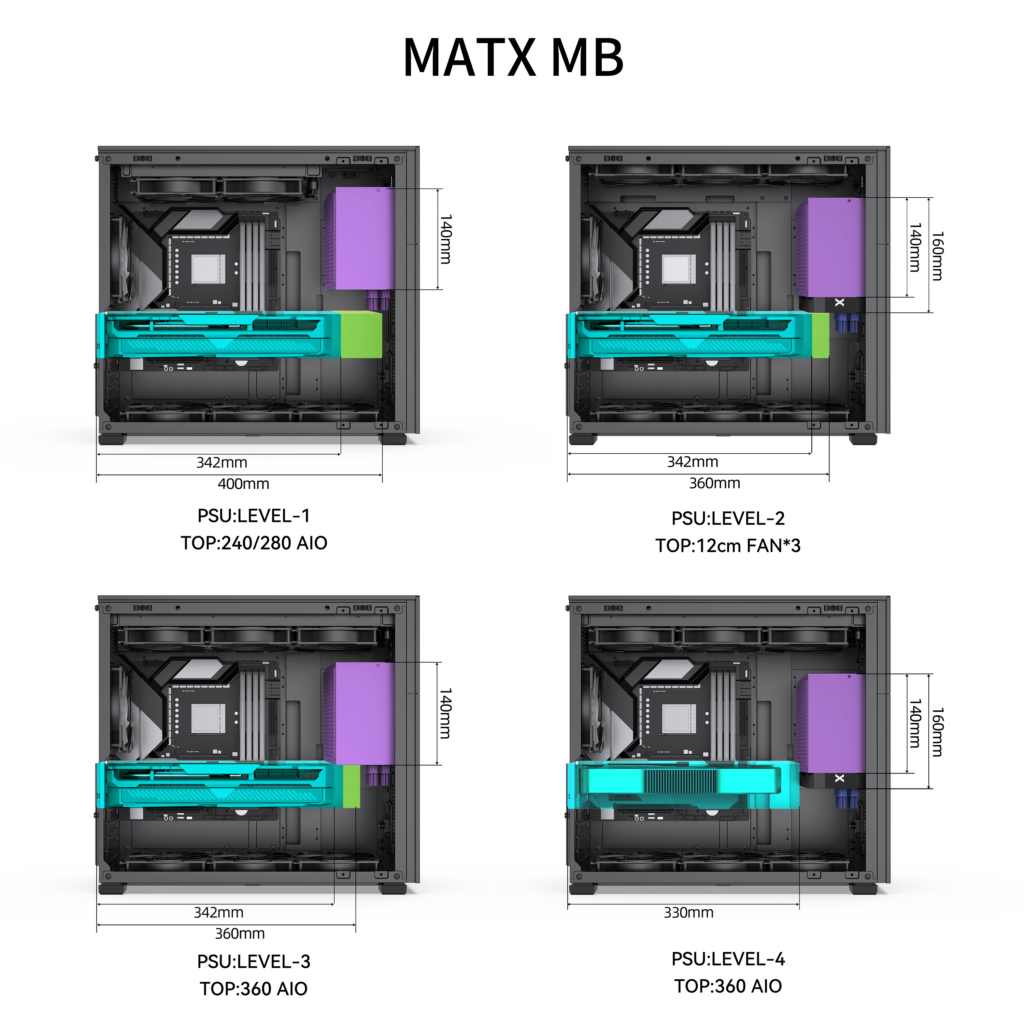
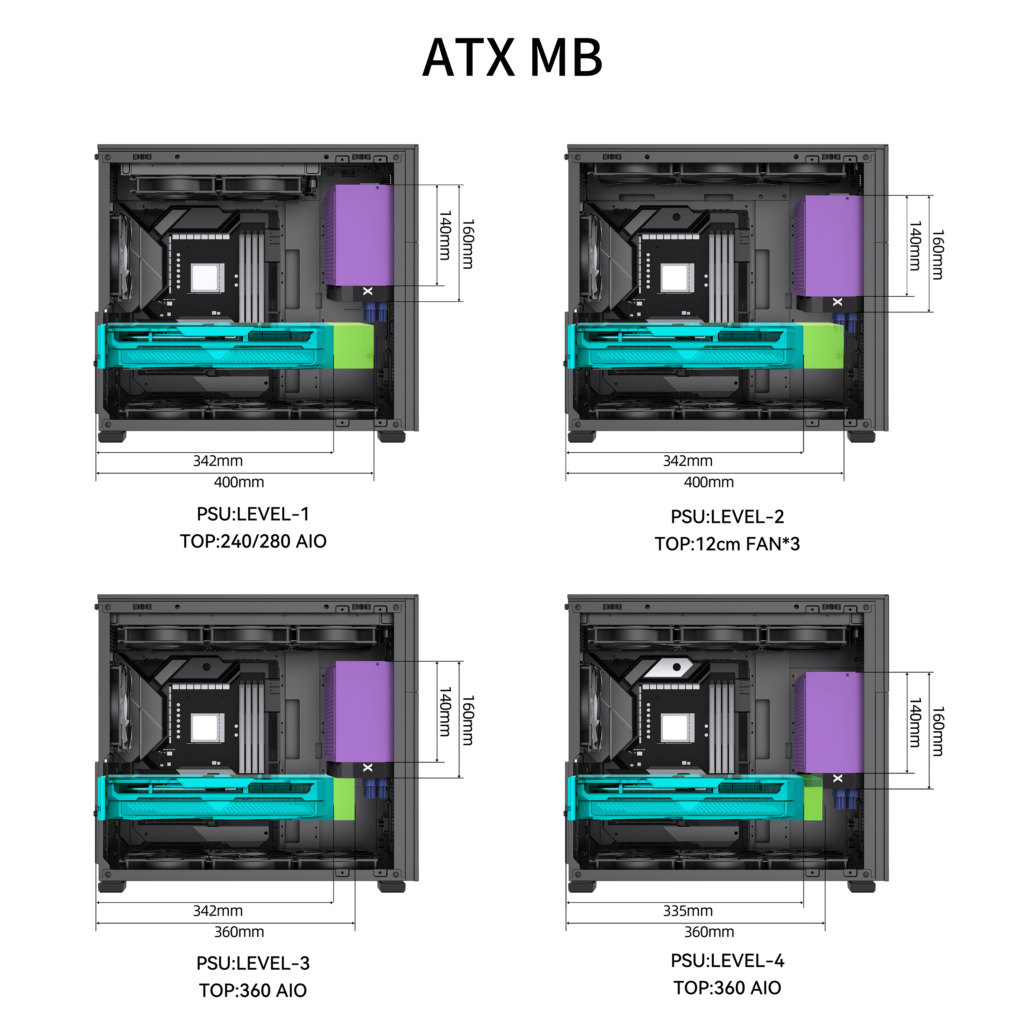
The Screen
Ok, we are done with the complicated numbers portion of this blog. This next section is all about ogling the 8” LCD screen. Cool with that?
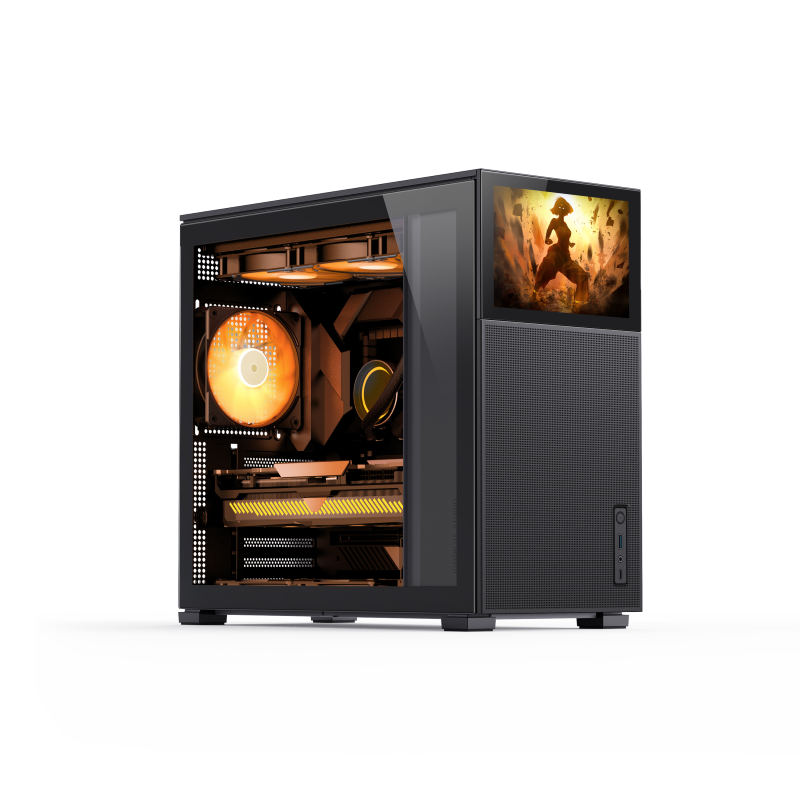
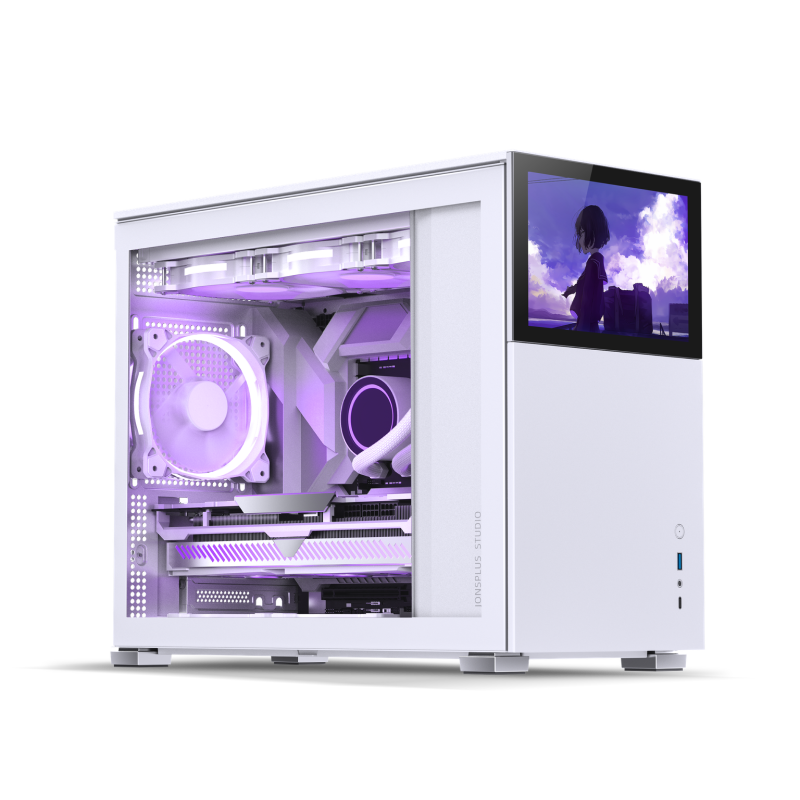
This dinky display is the stand-out feature of the Jonsbo D31 and D41. Occupying a third of the front panel, it has a 1280 x 800 resolution, 60Hz refresh rate, and 16:10 aspect ratio. There are even independent controls on the side for brightness and power. To protect it from getting scratched, the LCD screen is covered with a 1.1mm thick glass with a 6 Mohs hardness rating. You get to enjoy the 16.7 million colours without the worry of damage!
So, what can you use this panel for? Stay on top of your PC’s temperature by displaying the real-time status of all your vital components. Pay homage to your favourite animated wallpapers and GIFs. If you’re a dab hand at the old animations yourself, you could show off your own creations. Whatever you display will be vibrantly recreated. One thing to note is no software is natively installed on this screen. Jonsbo recommends Wallpaper Engine or AIDA64.
Alternatively, you can use it as a second mini monitor for your gaming PC, because it is fully removable. Equipped with both mini-HDMI and USB-C, integrating this screen with your set-up couldn’t be easier. Plus, replacement panels are included for when you do remove the screen. There will be no gaping holes left in your case!
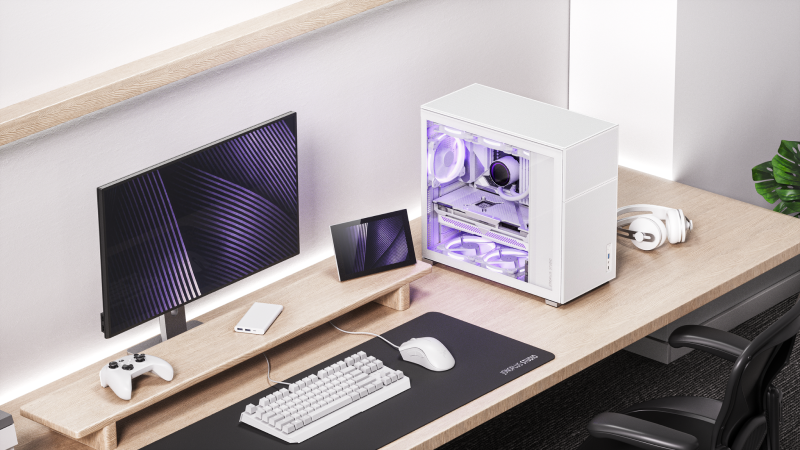
Mesh or Standard
The final aspect to go over is the difference between the standard and mesh models. It’s nice and simple, really. The standard version has a solid front panel, with hidden mesh ventilation on the side. The mesh version has a – you guessed it! – mesh front panel. This sports the same high-density mesh design as the top panel, for that enhanced natural airflow. Now, I could keep talking, but I reckon these pictures say it better than I ever could.
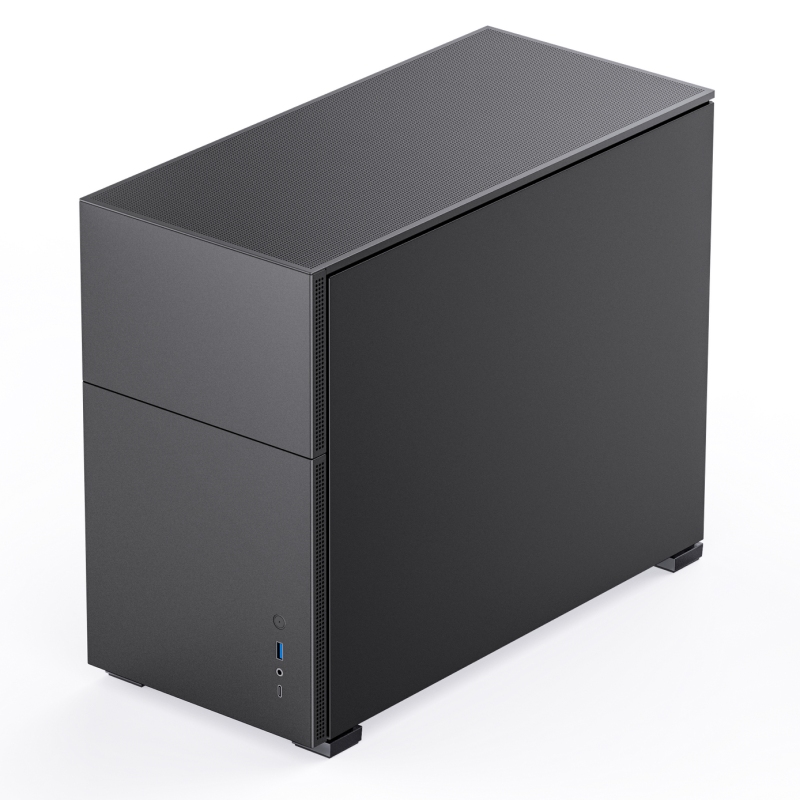
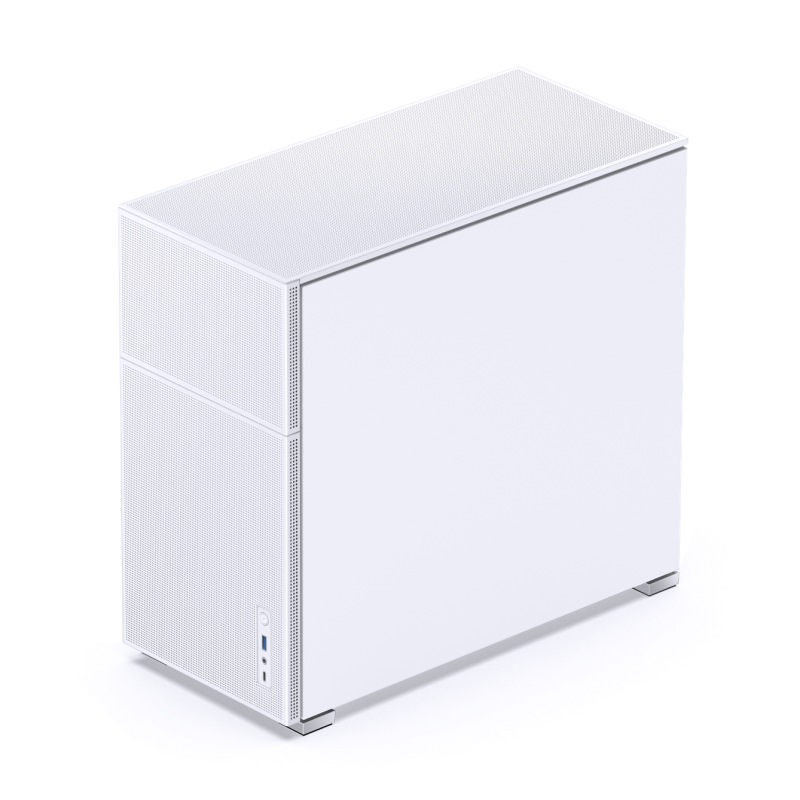
Upgrade Now
These phenomenal cases are now available to pre-order from Overclockers UK. Which will you go for? Compact Micro-ATX? Mesh for optimised airflow? Or all out with the LCD screen?
Jonsbo D31 Micro-ATX PC Case
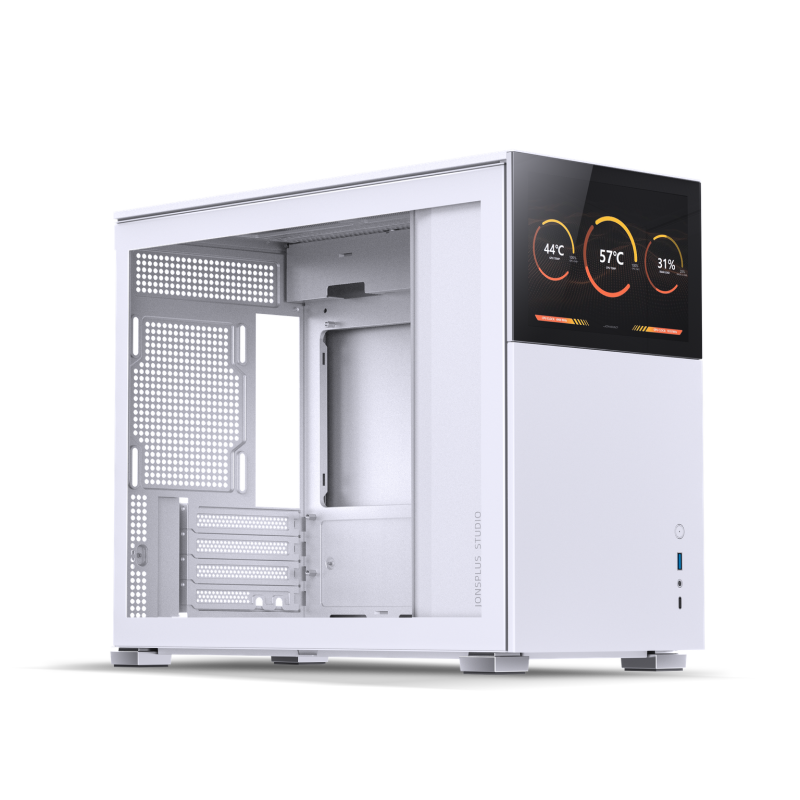
Jonsbo D41 ATX PC Case
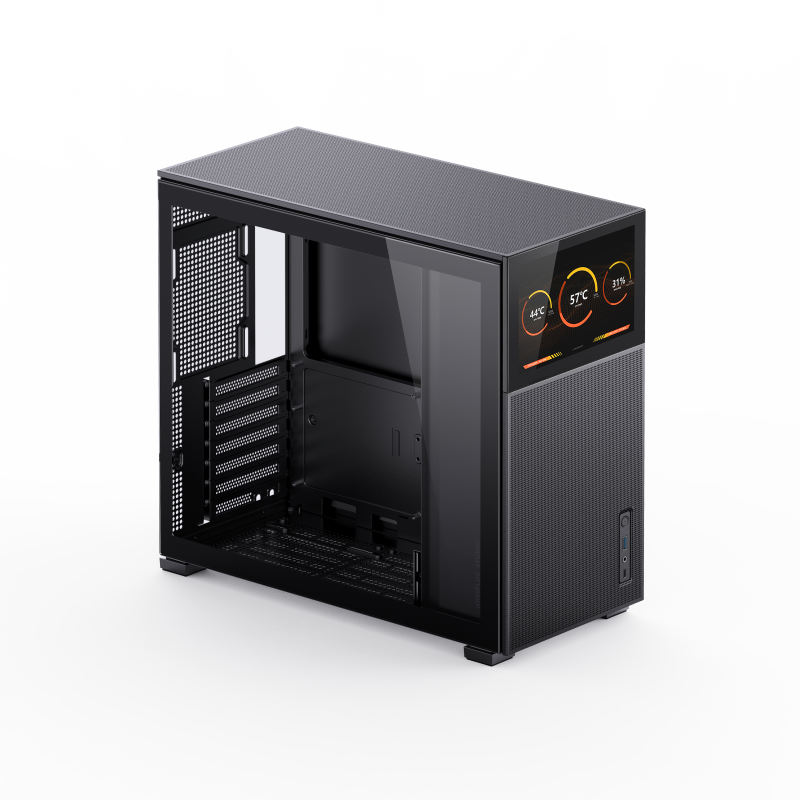
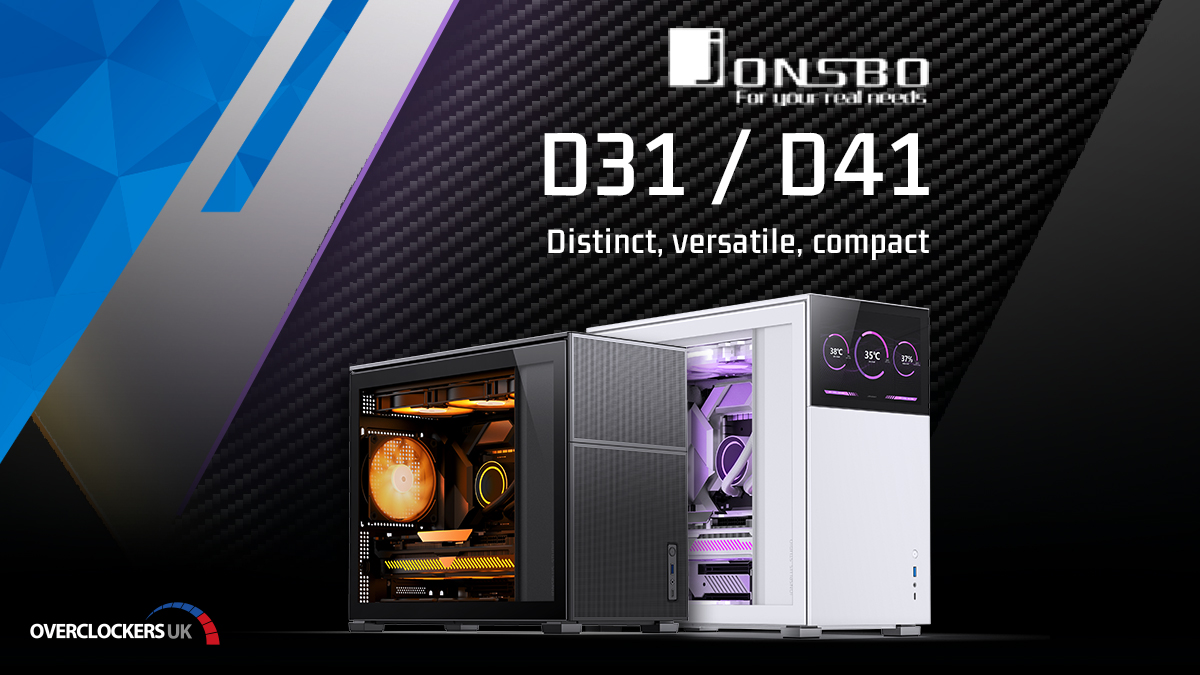
Any idea when they will be available?
Hey,
We’re super excited for these cases too. Hopefully stock should arrive sometime in the next month!
Do u have any more updates on stock delivery? Thanks
Stock should hopefully be with us soon!
Good news everybody! The D31s and D41s are in stock now! We’ve sold out of the D41 Mesh Screen in black already, but everything else should be there, waiting to go in your baskets 🙂
Any word on a date for when you guys are gonna have thus in stock?
Good news everybody! The D31s and D41s are in stock now! We’ve sold out of the D41 Mesh Screen in black already, but everything else should be there, waiting to go in your baskets 🙂